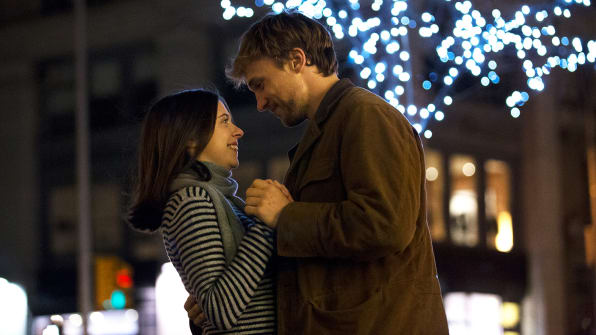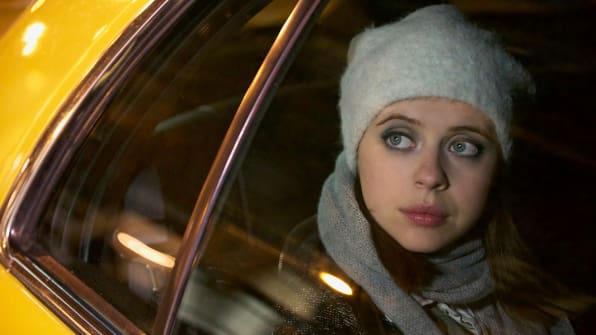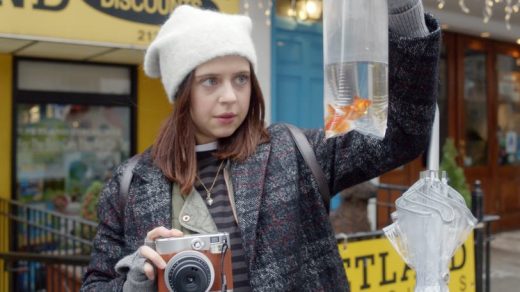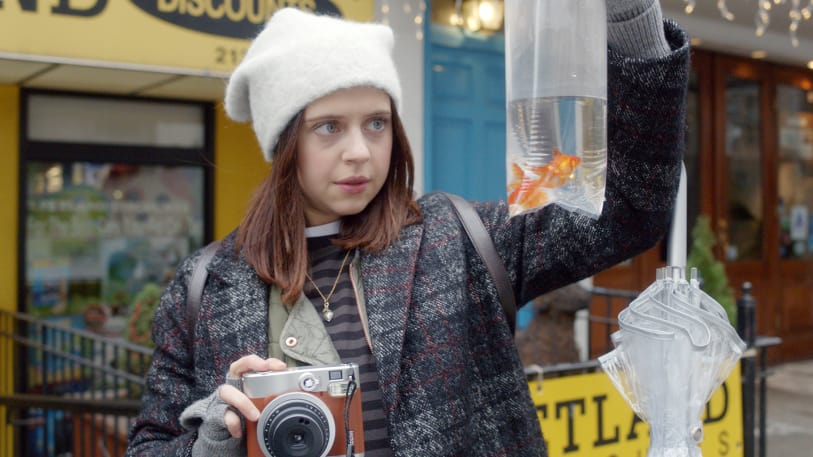‘Carrie Pilby’ Took 14 Years To Go From Novel To Screen ‘And That’s A Good Thing
When Caren Lissner’s young adult novel Carrie Pilby was released in January 2003, the person who would eventually play her on-screen, Bel Powley, was just about to turn 11 years old. And while the title character of Lissner’s book was a prodigy of sorts—a young British woman who graduated Harvard at 18 and tries to negotiate life in New York despite having little to no social skills—Powley was just a skosh too young to play her at that time. But now that the movie version has been released–it landed in theaters on March 30 and VOD on April 4–it seems like she was destined to play Carrie all along.
When I point this out to Lissner, the movie’s executive producer Suzanne McNeill Farwell, and director Susan Johnson, all three laugh. When a book takes a 14-year journey from page to screen, all involved need to have a hearty sense of humor.
Your Book Has Been Optioned, Now What?
It’s not like there wasn’t any enthusiasm for Pilby, though. A hit when it was first released, the manuscript attracted the attention of a literary agent who handles film and television deals—that’s how it got in Farwell’s hands. “I just fell in love with the book,” she tells Fast Company. “I was running a production company at Sony at that time. As much as I loved it, I knew it was a smaller movie, and I knew it didn’t fit the mandates that we had at that company. So, sadly, I had to pass on it. But, I never forgot it, and over the next 10 years I would check in periodically with [the agent]. Just is it available? Is it not?”
Optioning a book or story for movie and television purposes is a bit of a tricky business, if you’re the author of that work. You get paid to give up the rights to your creation, and the person or company who buys those rights can do anything they want with it for the time period they’ve bought, generally a year. They can involve the original writer in the process or choose to go on their own. Often, the original writer gets a check and never hears about the project until the rights expire and it becomes available again. That’s what happened to Lissner. (Full disclosure: Caren and I have been friends since 2005–or since 1986, depending on if we spoke to each other during a summer teen bus tour.) Her book was optioned twice for the intention of making Carrie Pilby into a television series, and both times she only got dribs and drabs of information on what their intentions were.
“My feeling is there’s not a lot I’m going to be able to do to change it anyway. So I try not to worry too much about things that are out of control, and try to work on things that are,” she says. “The other thing is, I’d revised the story so many times, and read it so many times that I really was curious to see what somebody with fresh perspective would do with it.”
In one of the instances, when Disney and ABC held the rights, there was a push to change Carrie’s first name. Lissner took that request in stride. “They wanted to change it to Darby Pilby, because at that time Sex in the City was popular. Honestly, I probably wouldn’t have named her Carrie if I had written it having watched Sex in the City. But I hadn’t watched it and didn’t know that Carrie Bradshaw existed. I thought [Darby] was actually kind of a cute name. I wouldn’t have minded that.”

“I’ve Learned to Manage My Expectations”
After the second option expired, Lissner tried to keep things in perspective. “I’ve learned to manage my expectations with anything in the arts,” she says. “Maybe if I was 21 and this happened, I would have a different perspective. But, everyone I meet is working on some kind of novel or movie. I’m just like, ‘If anything actually happens . . . ‘ So I try not to have high expectations. Just be cautiously optimistic.”
So when Farwell, who by 2012 had left Sony and was looking to produce an independent feature, got in touch with her, “it was a nice surprise. I was at work and got a very kind email from Suzanne asking if the rights were available, and that she liked the book.”
By then, the book had also been sent to Johnson, whom Farwell wanted to work with on a feature. “I was thinking of all the things that I had read over the years that I loved and didn’t happen for one reason other, then I thought of Carrie Pilby immediately, and sent it to [Susan],” Farwell says. “She fell in love with it as well. She read it over the weekend, and I think we optioned the book together the next week.”

A 2010-Style Twist
After acquiring the rights, Farwell and Johnson did something they wouldn’t have been able to do in 2003; they started a Kickstarter campaign, because, as Johnson says, “We weren’t funded producers. [We needed] to raise money to hire a skilled writer, because we knew that that was going to be required to get us the quality of script we wanted. But, also something that we knew that we could get financed and cast.” The campaign raised more than $ 73,000, enough to hire Kara Holden to craft a screenplay, which was a challenge given the fact that the book is told from Carrie’s perspective, in the first person.
What they ended up doing is making Carrie’s sessions with her therapist (and friend of her father’s) Dr. Petrov (Nathan Lane) the substitute for Carrie’s inner monologue. Also a few small technology references needed to be updated. But, for the most part, the story stayed intact.
Another difference between Farwell and Johnson and the other people who optioned Carrie Pilby, though, is that they kept Lissner involved in the process. “I really respect the creator of the material,” Johnson says. “I really wanted us to make sure that we weren’t going off track. But also, [Caren]’s so creative and we both knew that we didn’t want to alienate the fan base of the book. That’s sort of a great blanket to have around you. You know that you’re going to be guided by Caren’s words and the reactions of the people that are such fans of the book. We always sent her every draft of the script, but said, ‘You don’t have to read it if you don’t want. If you do want, that’d be great.’ Then eventually I felt like I was begging her for notes.”
“I was very careful because I didn’t want to interfere.” says Lissner. “You can’t get a creative project done if someone’s second-guessing you. I was very happy to be included, and I thought I did have some good insights, because I had lived with the book for a while. I not only knew what I had in mind when I was writing it, but I also had [knowledge of] how readers had reacted over the years. So I gave a little bit of that feedback.”
Help like that was very useful to Johnson as she directed her first feature. “[Caren] was clearly presenting herself as someone who wasn’t going to stand in the way. She was saying over and over, ‘It’s yours now. Do what you need to do.’ That gave us the comfort to go, ‘Okay, then let’s try this. Or what about this?’ Otherwise, if the [author] is on set and they’re really attached to every single word being exactly as it is in the book, it can be very problematic.”
Lissner can be seen as an extra in a scene where Carrie is walking through Central Park, but that was far from her first day on the set. Farwell and Johnson invited her to the set from day one. She and Lane, who had become a fan of Lissner’s book after booking the part of Petrov, became a mutual admiration society during filming. And, when Lissner saw the set of Carrie’s apartment on the first day of shooting, the reality that her creation was going to make it to the screen after such a long time became a bit overwhelming.
“I was very unsteady and I didn’t want to show anyone that,” she says. “So I grabbed onto a window, but I heard somebody say, ‘Get her water.’ So, I think someone noticed something.”
(79)














